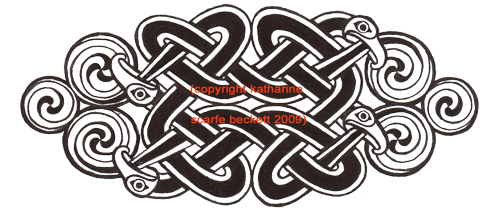Calligraphy skills!
The subject of calligraphy is a great source of pleasure and calm — and can be used to give a lot of pleasure to others, too.
Each calligraphy skill is made up of a fact to understand, a movement to practise, and an examination of the results. Each one you learn gives you more control, freedom and ability to make letters, words, and pages look more beautiful and interesting than usual.
There are many calligraphy skills. They are used professionally, of course, by calligraphers, who write beautifully for a living. But calligraphy skills are also the foundation of all handwriting. Handwriting is thought made visible and enduring.
Like other satisfying personal skills such as dancing, cooking, or playing ukulele, the art of beautiful handwriting
- can be learned step by step,
- gets better with practice,
- and comes to life when it's shared with an audience.
The basic tools and materials are inexpensive. And it’s fun.
Calligraphy can be taken to expert heights. Calligraphy skills are used in many areas of art and graphics, from greetings card design to tattoo artistry. But you don't have to be labelled 'a professional' to express your creative self, improve your skills, and have a pleasing effect on others. I've been earning (good, if occasional) money from commissioned calligraphic pieces in between 'the real job' for around twenty years now!
Moreover, as one wildly creative and influential human being has said:
"The arts are not a way to make a living. They are a very human way of making life more bearable. Practicing an art, no matter how well or badly, is a way to make your soul grow, for heaven's sake. Sing in the shower. Dance to the radio. Tell stories. Write a poem to a friend, even a lousy poem. Do it as well as you possibly can. You will get an enormous reward. You will have created something."
Kurt Vonnegut
Like all creative pursuits, if you stay with it, calligraphy offers you a journey.
But why calligraphy in particular? Why not ukulele, or cookery?
- writing beautifully results in a lasting object that can be displayed, gifted, or exchanged for other nice things: admiration, chocolate, concert tickets, cash :-)
- calligraphy involves other people without depending on them being there
- calligraphy gives your written words more power
- the practice of calligraphy is simple, inexpensive, and meditative, and there’s great pleasure in the calmness and perseverance that come from improving your skills
- history is full of handwritten texts, and calligraphy opens into all kinds of cultural interests
Maybe the best reason for pursuing calligraphy is you just don't know where it may take you. Here's Steve Jobs, on dropping out of college:
"It wasn't all romantic. I didn't have a dorm room, so I slept on the floor in friends' rooms, I returned coke bottles for the 5¢ deposits to buy food with, and I would walk the 7 miles across town every Sunday night to get one good meal a week at the Hare Krishna temple. I loved it. And much of what I stumbled into by following my curiosity and intuition turned out to be priceless later on. Let me give you one example:
"Reed College at that time offered perhaps the best calligraphy instruction in the country. Throughout the campus every poster, every label on every drawer, was beautifully hand calligraphed. Because I had dropped out and didn't have to take the normal classes, I decided to take a calligraphy class to learn how to do this. I learned about serif and san serif typefaces, about varying the amount of space between different letter combinations, about what makes great typography great. It was beautiful, historical, artistically subtle in a way that science can't capture, and I found it fascinating.
"None of this had even a hope of any practical application in my life. But ten years later, when we were designing the first Macintosh computer, it all came back to me. And we designed it all into the Mac. It was the first computer with beautiful typography. If I had never dropped in on that single course in college, the Mac would have never had multiple typefaces or proportionally spaced fonts. And since Windows just copied the Mac, it's likely that no personal computer would have them. If I had never dropped out, I would have never dropped in on this calligraphy class, and personal computers might not have the wonderful typography that they do. Of course it was impossible to connect the dots looking forward when I was in college. But it was very, very clear looking backwards ten years later."
Steve Jobs commencement address to Stanford, 2005
While teaching calligraphy, I've realised that lots of people are interested in the subject but unsure how to learn. I try to help by providing some practical guides to writing techniques, lettering skills, page design and decoration skills (including gilding), and other sources of information you might find useful.
And this site is also something of a catch-all for my own, related interests in alphabets, pages, writing, and books in general. You might care to take a look at the sitemap for more.
At the top of the page you’ll find buttons linking to various topics. Most of those pages contain more links to other, more detailed pages. There is also a full list of all the site pages down the left-hand side of each page, or you could navigate using the site map.
And if you’d like to, please do get in touch. I’m usually pretty good at writing back within a few days.
In case it’s of use or interest, I have alter egos as a writer/editor and miniaturist.
Have fun! Thanks for visiting!



